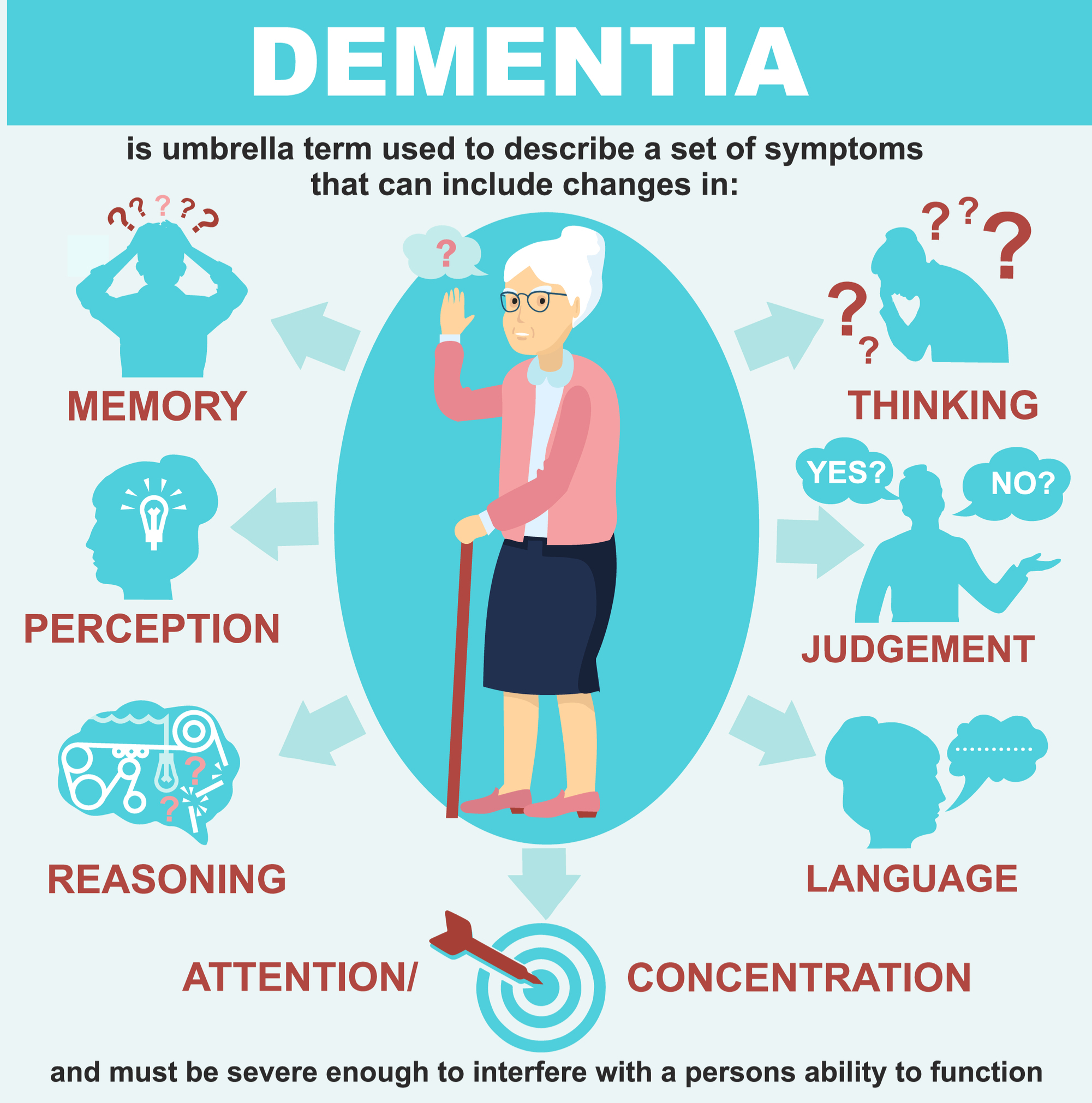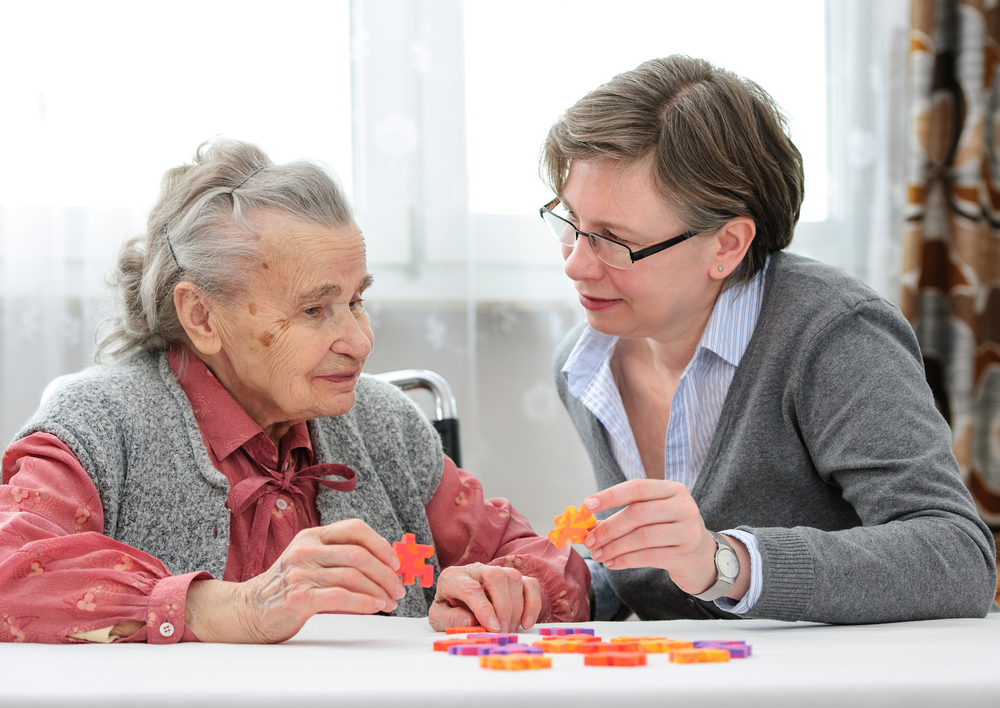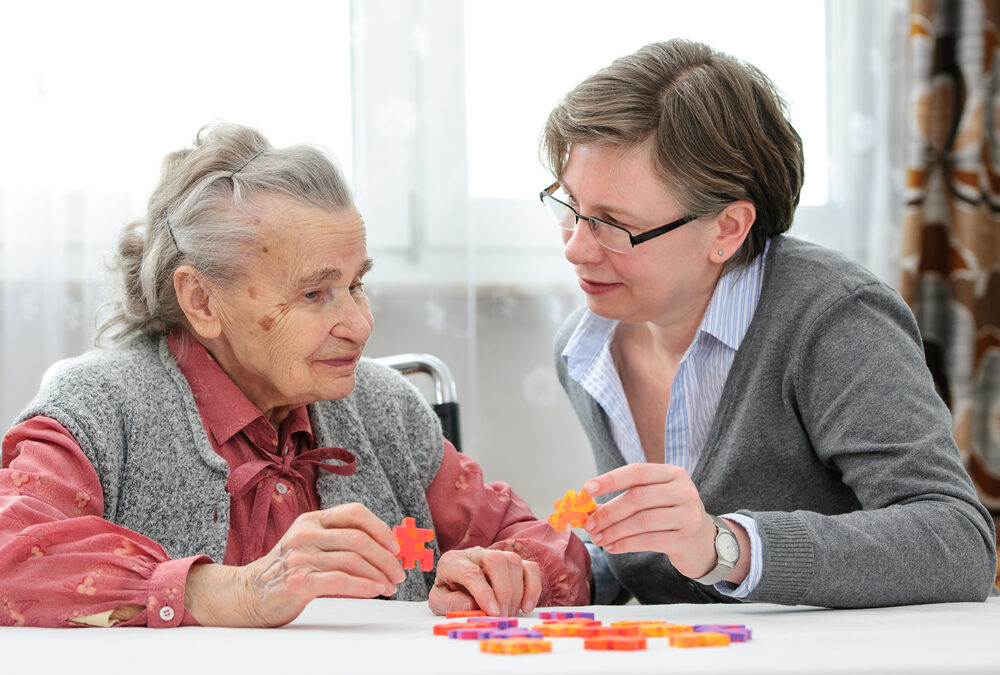Contents
Types of Dementia in Elderly Loved Ones
My Grandmother suffered from Alzheimer’s, which is only one of the many types of dementia in elderly people. Her condition led me to research this debilitating disease in an effort to help her and others. When my father suffered a stroke, he feared a dementia diagnosis. Thankfully, he avoided that limiting condition.
Many people fear a life of dementia. My Grandma often said that she hoped it never happened to her. Sadly, she was diagnosed not long after the death of Grandpa. Caring for her through this trying time, both my parents also noted that they hoped to avoid any type of dementia. Most of us fear dementia, but do we really understand it?
In medicine today, dementia is often one of the most misunderstood conditions. Some individuals think that senility or senile dementia is an inevitable result of aging. Moreover, never seek evaluation for members of the family who show signs of memory loss. Others think that any proof of forgetfulness is proof of dementia. However, none of these conclusions is accurate either. However, there are many types of dementia in elderly people.
What is Dementia?
Dementia is a broad description that encompasses several symptoms. Dementia symptoms include memory loss, difficulty finding words, and poor judgment; moreover, brain cell damage triggered these symptoms.
Many factors can trigger dementia when there is damage or disease to your brain’s parts used for learning, memory, decision making, and language. You can hear it called a major neurocognitive disorder, as well. Dementia isn’t an illness. Instead, it’s a series of symptoms caused by other conditions. In this guide, we will discuss several types of dementia in elderly men and women.
What are the causes of dementia?
Dementia’s most popular causes include:
1- degenerative nerve diseases
Many of the body’s movements, such as balance, movement, talking, breathing, heart function, and degenerative nerve diseases. So, all these nerve disorders ultimately lead to dementia.
2- Vascular disorders
These conditions impair blood production in your brain, Leads to Dementia.
3- Traumatic brain injury
A hard impact or jolt to the head or body typically results from traumatic brain injury. An object that penetrates brain tissue, such as a bullet or a broken portion of the skull, may also cause traumatic brain injury. One of the leading causes of dementia is these head injuries.
4- Infections of CNS
These infections include meningitis, HIV, and the illness of Creutzfeldt-Jakob.
Other factors may include:
- Alcohol or drug use
- Depression
- Smoking
- Age
- Dementia in your family
- diabetes,
- Down syndrome,
- heart disease
- sleep apnea

Symptoms of Dementia in the elderly
There are issues with thinking and remembering people with dementia that impair their ability to handle their everyday life. There are some signs that you should look for:
- The complexity of understanding new content is also one of the early symptoms of dementia.
- Memory issues in the short term, such as forgetting where they put something or asking the same question repeatedly.
- Problems with communication, including not being able to come up with an expression
- Getting Lost
- They are no longer capable of caring for themselves adequately and need help for all daily living activities.
- Patients may forget, over time, how to walk or even how to sit up.
Types of Dementia in elderly
There are several types of dementia in elderly people. Let’s discuss one by one.
1- Alzheimer’s Dementia
It is the most prevalent type of dementia in elderly men and women. Experts have not yet found the trigger. Although AD patients have reported amyloid plaques (the accumulation of an abnormal protein) in some parts of their brain, it remains unclear if they cause the disease or are an outcome of it.
While most Alzheimer’s disease cases start after 65, some symptoms begin earlier, perhaps at 40 or 50 years old. This early onset of Alzheimer’s disease develops sooner than the last beginning of AD.
People with Alzheimer’s have difficulty concentrating and reasoning and may have little or no time-orientation. Emotionally, they exist in the moment and can-do things that make no sense at all. The Alzheimer’s phase has divided into seven stages that begin with fundamental confusion. Moreover, in the later stages, the individual has lost considerable skills (swallowing, for instance, and full-time treatment is required.
Average life expectancy varies from 3 to 10 years after diagnosis for people with Alzheimer’s disease. Although some individuals live up to 20 years, depending on many factors, such as diagnosis age.
2- Vascular Dementia
The second most common cause of dementia is vascular dementia, and it is due to several strokes within the brain. These strokes can also have overlooked, and there may be no associated symptoms for patients, such as fatigue, vision loss, or numbness. There may be a chance to develop vascular dementia in patients with untreated high blood pressure or heart disease.
As compared to a progressive deterioration more characteristic of Alzheimer’s, vascular dementia usually has a step-like progression. This means that vascular dementia may remain stable until a significant decline occurs after the initial symptoms. However, they stay at the next level again for an extended period until the subsequent deterioration develops.
Vascular dementia prognosis varies widely and can link to damage is in the brain and other stroke or TIA events.
3- Frontotemporal Dementia
Frontotemporal Dementia is a term used to characterize various dementia types, all with one thing in common. They affect the brain’s front and side sections, which are the areas that regulate language and actions. Moreover, it’s known as Pick’s disease as well.
Frontotemporal Dementia affects individuals as young as the age of 45. At the same time, scientists do not know what causes FTD. However, according to the Alzheimer’s Society, it works in families, and people with it have mutations in some genes.
As well as compulsive behavior, this dementia causes loss of inhibitions and motivation. It also causes individuals to have speech disorders, including misunderstanding the meaning of common words. Life expectancy varies from about three to ten years after diagnosis, depending on what kind of FTD the individual has established.
4- Dementia with Lewy Bodies
Protein deposits in nerve cells because of Lewy body dementia, often referred to as Dementia with Lewy bodies. In the brain, this disrupts chemical signals and induces memory loss and disorientation.
Individuals with this form of dementia also experience visual disturbances and have difficulty falling asleep at night or suddenly falling asleep during the day. They may even faint or become disoriented or lost. Lewy body dementia shares many symptoms with Parkinson’s and Alzheimer’s diseases. For instance, many people experience tremors in their hands, have difficulty walking, and feel tired.
In Lewy dementia, the brain’s symptoms develop before the signs of the body. However, at the same time or less than a year after the symptoms of the body. Lewy body dementia can differ quite a bit, even from day today. In general, however, the disease begins slowly and eventually gets worse.
5- Parkinson’s disease
Dementia can develop by many people with advanced Parkinson’s disease. Problems with thought and judgment are early signs of this form of dementia. For instance, a person with dementia from Parkinson’s disease can have difficulty interpreting visual information. Moreover, a person fails to remember how to perform basic everyday tasks. They might also have hallucinations that are disturbing or scary.
This form of dementia can also cause irritability in an individual. As the disease progresses, many individuals become depressed or paranoid. Others have difficulty communicating and, during a conversation, can forget words or get lost.
Dementia from Parkinson’s disease typically develops steadily over time. Sometimes, hallucinations become widespread, and confusion is likely to increase. Umbles can also become more common, and physical functioning decreases overall.
Average life expectancy varies considerably based on the individual’s health and the age at which Parkinson’s has developed.
6- Creutzfeldt-Jakob disease
One of the rarest types of dementia is Creutzfeldt-Jakob disease (CJD). According to the Alzheimer’s Association, only 1 in 1 million individuals are diagnosed with it every year. CJD develops very rapidly, and within a year of diagnosis, individuals frequently die.
There are common signs of CJD to other types of dementia. Some individuals, while others suffer from depression, experience agitation. Memory misunderstanding and loss are also common. CJD also affects the body, causing muscle tension and twitching.
Memory disorders grow as the disease progresses and changes in behavior and physical coordination, including walking and vision. Hallucinations and psychosis can occur in the later phases, and overall functioning can deteriorate, including swallowing and eating.
Average life expectancy is greatly affected since no treatment for the disease is currently available. Around 70 percent of patients die within a year of initiation.
7- Fatal Familial Insomnia
This disease is also one of the rarest types of dementia in elderly people. This unusual genetic disease dramatically affects sleep. As well as anorexia, a person can experience insomnia, vivid dreams, and hallucinations.
The ability to walk and move the body worsens as this disease progresses. Memory loss and insufficient attention and focus develop, and in its late stages, a person often is unable to communicate.
After the production of FFI, life expectancy is around 12 to 18 months. However, some live for just a few months and others for a few years.
8- Alcoholic dementia
When patients drink excessively and develop a deficiency of one of the B vitamins, alcoholic dementia will induce. Brain cells are unable to act appropriately as this occurs, and memory loss can occur.
This dementia is called the syndrome of Korsakoff. Patients who are malnourished from other causes are also at risk of developing this condition but is often found in alcoholics.
An individual with dementia associated with alcohol can also have memory issues. They cannot comprehend new knowledge, such as losing the specifics of a conversation quickly. They might also not remember facts and experiences, such as where they lived or locations where they were on vacation.
9- Huntington’s disease
Huntington’s disease is a dementia-inducing hereditary disorder. There are two types: juvenile and adult-onset. In childhood or adolescence, the juvenile form is rarer and causes symptoms.
Typically, the adult form triggers symptoms in a person first while they are in their 30s or 40s. The disease causes the brain’s nerve cells to break down prematurely, leading to dementia and impaired movement.
If it progresses, communication, walking, swallowing, and cognition are impaired by Huntington’s. Involuntary gestures (chorea) are more pronounced and significantly interfere with day-to-day functioning. Huntington’s life expectancy ranges from 10 to 30 years after diagnosis.
10- Mixed dementia
Mixed dementia refers to a condition where more than one form of dementia is present in a person. Mixed dementia is very prevalent, and vascular dementia and Alzheimer’s are the most common combination. Up to 45 percent of people with dementia have mixed dementia, according to the Jersey Alzheimer’s Association.
Mixed dementia in various individuals may cause multiple symptoms. Some individuals first experience memory loss and disorientation, while others have changes in behavior and mood. As the condition progresses, most persons with mixed dementia may have trouble communicating and walking.
When mixed dementia progresses, brain activity decreases further, causing physical skills such as everyday life tasks and all aspects of cognition to be complicated. As diagnosis is intermittent, life expectancy after diagnosis of mixed dementia is not known.
Researchers predict, however, that the prognosis for mixed dementia could be shorter than for a single cause of dementia.
11- HIV/AIDS Dementia
Initially, people with HIV-related dementia also have concentration, focus, and memory problems. In their attitude and actions, they can also display some improvements.
Physical skills can also begin to degrade as HIV-associated dementia progresses. For instance, with walking or hand-eye coordination, someone can have more trouble.
Prognosis varies and can depend on the body’s response to HAART treatments (highly active antiretroviral therapy).
12- Normal Pressure Hydrocephalus
A triad of symptoms characterizes normal hydrocephalus pressure. Those can usually cause cognitive impairment, trouble walking, and issues with urinary incontinence.
Dependent on medication, progression varied. NPH is a disorder that triggers dementia symptoms but can be reversed with timely treatment occasionally. Walking is always the first sign that progresses, followed by continence and cognition when NPH responds to treatment.
Before further brain injury happens, seeking care as early as possible will help a doctor intervene. One of the types of dementia that can treat with surgery is normal pressure hydrocephalus.
Conclusion
As you have read, dementia denotes a broad term for several diseases. Consider it a symptom, rather than a disease. And there are several types of dementia in elderly men and women. At this point, there is no known way to avoid the development of dementia entirely. However, numerous practices help reduce the risk. Experts also advise people to remain physically active and avoid tobacco use and excessive alcohol consumption. Also, maintain a healthy weight and prevent head injuries.
Read More
Bathing the Elderly, avoid conflict






